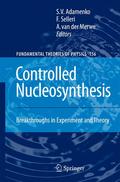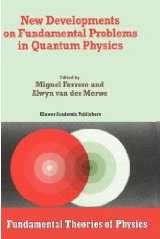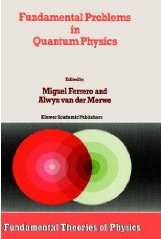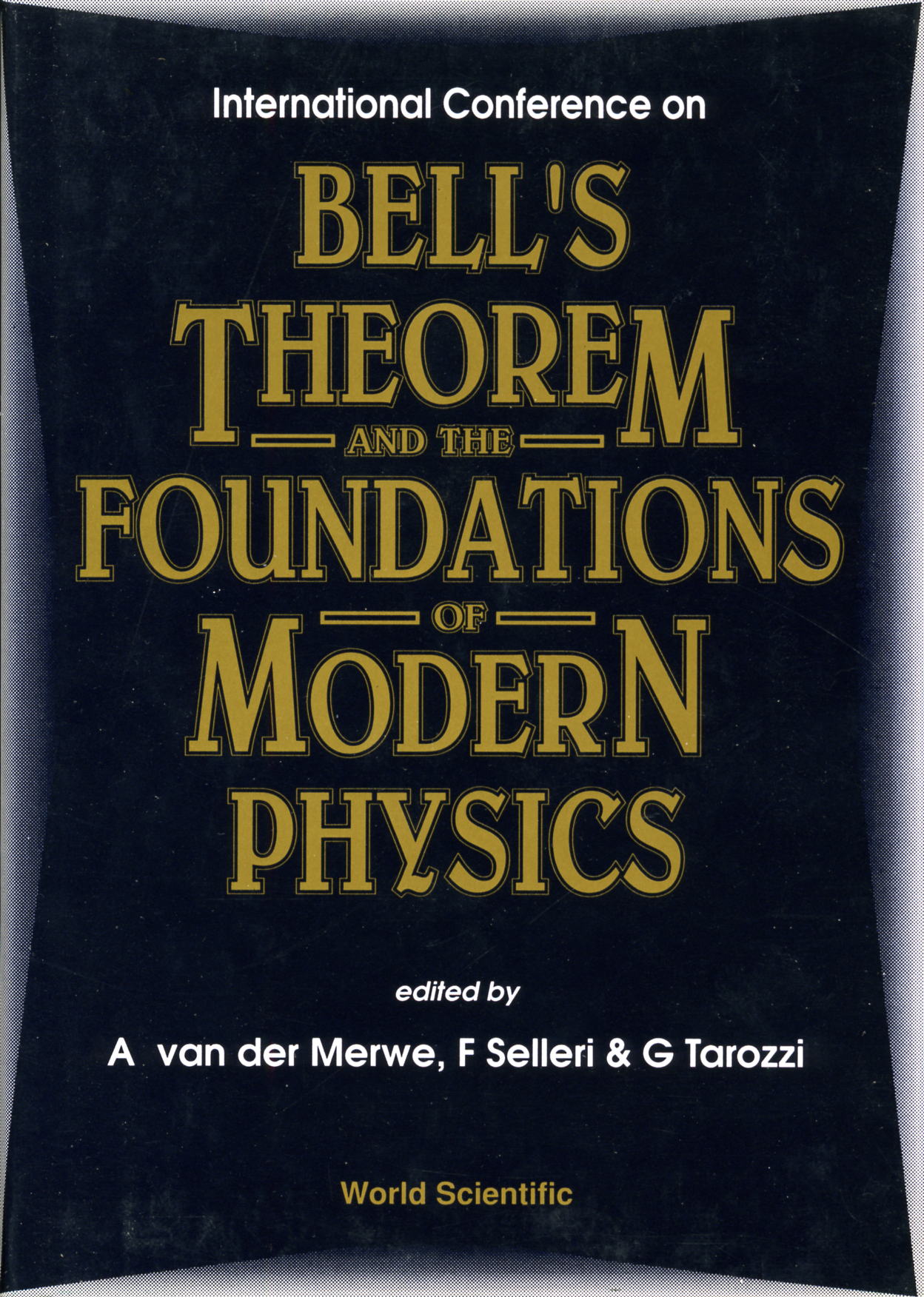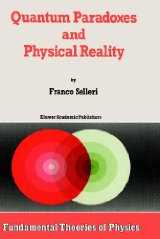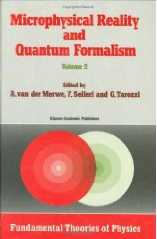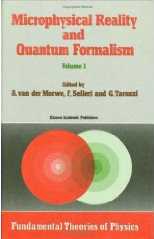Pages: 780
Publisher: Springer
Year: 2007
ISBN: 140205873X
ISBN: 978-1402058738
This book ushers in a new era of experimental and theoretical investigations into collective processes, structure formation, and self-organization of nuclear matter. It reports the results of experiments wherein for the first time the nuclei constituting our world (those displayed in Mendeleev's table as well as the super-heavy ones) have been artificially created. Pioneering breakthroughs are described, achieved at the ?Proton-21? Laboratory, Kiev, Ukraine, in a variety of new physical and technological directions.
A detailed description of the main experiments, their analyses, and the interpretation of copious experimental data are given, along with the methodology governing key measurements and the processing algorithms of the data that empirically confirm the occurrence of macroscopic self-organizing processes leading to the nuclear transformations of various materials. The basic concepts underlying the initiation of self-sustaining collective processes that result in the formation of nuclear structures are also examined.
How to realize nucleosynthesis of stable nuclei in the laboratory? Why are metallic meteorites of iron or nickel-iron? Could the iron be nuclear fuel and could an iron star blow up as a supernova? And what could be the energy source of such an explosion? Is it possible to obtain nuclear energy from any terrestrial substance without producing radioactivity? Do super-heavy (Migdal's) nuclei exist, and is it possible to synthesize them in the laboratory? What physical mechanisms could one use to control nuclear transformations and particularly the sign of the overall energy balance involved?
Answers to these and other intriguing questions are to be found in this book.
Pages: 468
Publisher: Springer
Year: 1997
ISBN: 0792343743
ISBN: 978-0792343745
Quantum theory is one of the most fascinating and successful constructs in the intellectual history of mankind. Nonetheless, the theory has very shaky philosophical foundations.
This book contains thoughtful discussions by eminent researchers of a spate of experimental techniques newly developed to test some of the stranger predictions of quantum physics. The advances considered include recent experiments in quantum optics, electron and ion interferometry, photon down conversion in nonlinear crystals, single trapped ions interacting with laser beams, atom-field coupling in micromaser cavities, quantum computation, quantum cryptography, decoherence and macroscopic quantum effects, the quantum state diffusion model, quantum gravity, the quantum mechanics of cosmology and quantum non-locality along with the continuing debate surrounding the interpretation of quantum mechanics.
Audience: The book is intended for physicists, philosophers of science, mathematicians, graduate students and those interested in the foundations of quantum theory.
Pages: 388
Publisher: Springer
Year: 1995
ISBN: 0792336704
ISBN: 978-0792336709
For many physicists quantum theory contains strong conceptual difficulties, while for others the apparent conclusions about the reality of our physical world and the ways in which we discover that reality remain philosophically unacceptable.
This book focuses on recent theoretical and experimental developments in the foundations of quantum physics, including topics such as the puzzles and paradoxes which appear when general relativity and quantum mechanics are combined; the emergence of classical properties from quantum mechanics; stochastic electrodynamics; EPR experiments and Bell's Theorem; the consistent histories approach and the problem of datum uniqueness in quantum mechanics; non-local measurements and teleportation of quantum states; quantum non-demolition measurements in optics and matter wave properties observed by neutron, electron and atomic interferometry.
Audience: This volume is intended for graduate students of physics and those interested in the foundations of quantum theory.
Pages: 638
Publisher: Springer
Year: 1994
ISBN: 0306447320
ISBN: 978-0306447327
ISBN: B000OSYJG4
Pages: 500
Publisher: World Scientific Pub Co Inc
Year: 1993
ISBN: 9810210884
ISBN: 978-9810210885
Pages: 340
Publisher: Springer
Year: 1990
ISBN: 0792302532
ISBN: 978-0792302537
This book is an expanded version of Selleri's Die Debatte um die Quantentheorie, and is devoted to the most foundamental themes of Quantum Physics: acausality, wave-particle duality, Einstein-Podolsky-Rosen (EPR) paradox, and so on. Several paradoxes have plagued quantum physics since its beginnings, the easiest of which to solve are the paradoxes of completeness (Schrodinger's cat, Wigner's friend, de Broglie's box, etc.). At a deeper level is the paradox of wave-particle duality whose solution probaily requires the Einstein-de Broglie picture of atomic systems. The most difficult of them all is the EPR paradox (incompatibility between local realism and quantum theory). The book shows that experimental research can, in principle, solve paradoxes such as EPR and wave-particle duality but the experiments performed on Bell-type inequalities have instead left the conceptual situation fundamentally unmodified.
Rewiews of "Quantum Paradoxes and Physical Reality":
"This volume is major contribution to the literature on the foundations of quantum physics. It should be an important reference book in the field for years to come." - Alastair I.M. Rae, Found. Physics, Vol. 23, p. 133 (1993).
"I strongly recommend the reading of Selleri's book, not only because of its technical interest, but also for seeing how the inevitable perplexities of any other quantum theorist are viewed by a declared partisan of realism." (Transl. from French) - Olivier Costa de Beauregard, Ann. Fond. L. de Broglie, Vol. 15, p. 239 (1991).
"Professor Selleri is almost uniquely qualified - a true skeptic who nonetheless has a deep grasp of the 'Copenhagen interpretation'. If you add to this an unflagging intellectual honesty and a basic sense of fairness, you can appreciate what a special document this book is." - Daniel Greenberger, Physics Essays, Vol. 4, p. 436 (1991).
"Selleri has written with rigor and clarity a superb book which is understandable and informative for every one interested in quantum mechanics." - Max Jammer, Found. Physics, vol. 21, p. 1335 (1991).
"Selleri has also achieved a part of what Einstein had in mind: to find a possibility to conceive causal and real processes as the foundation of statistical quantum theory without falling into logical contradictions." (Transl. from German) - Erwin Kerkenberg, Jour. Gen. Phil. Science, Vol. 22, p. 177 (1991).
"On reading these pages one is overcome with the impression that the 'Copenhagen interpretation' is not the only possible one. I do belive that this book makes us understand the essence of quantum mechanics, an understanding that is never available in regular textbooks of physics." (Trasl. from Japanese) - Mikio Namiki, Butsuri, Vol. 53, p. 795 (1991).
"In this work Professor Franco Selleri of the University of Bari turns in a remarkable virtuoso performance in which historically and philosophically sensitive discussion accompanies a careful and thorough presentation of the requisite technical details." - James Cushing, Am. Jour. of Physics, Vol. 58, p. 797 (1990).
"The work described here is a fascinating story, documented with meticulous details, of human inquiry into some of the most intriguing fundamental questions of science." - Dipankar Home, 2001, Vol. Nov. 1990, p. 37.
Pages: 484
Publisher: D. Reidel Publishing Company
Year: 1988
ISBN: 9027726841
ISBN: 978-9027726841
Proceedings of the Conference, Held in Urbino, Italy, September 25-October 3, 1985
Pages: 496
Publisher: D. Reidel Publishing Company
Year: 1988
ISBN: 9027726833
ISBN: 978-9027726834
Pages: 452
Publisher: Springer
Year: 1988
ISBN: 9027727031
ISBN: 978-9027727039
Pages: 440
Publisher: Springer
Year: 1984
ISBN: 9027718539
ISBN: 978-9027718532
"Even a physicist or philosopher of physics who does not subscribe to the realistic interpretation of quantum mechanics will find the book stimulating, informative and, perhaps to his surprise, also enjoyable.' Foundations of Physics
Review by Richard Healey, Philosophy of Science (March 1987), 54(1):132-134.


